|
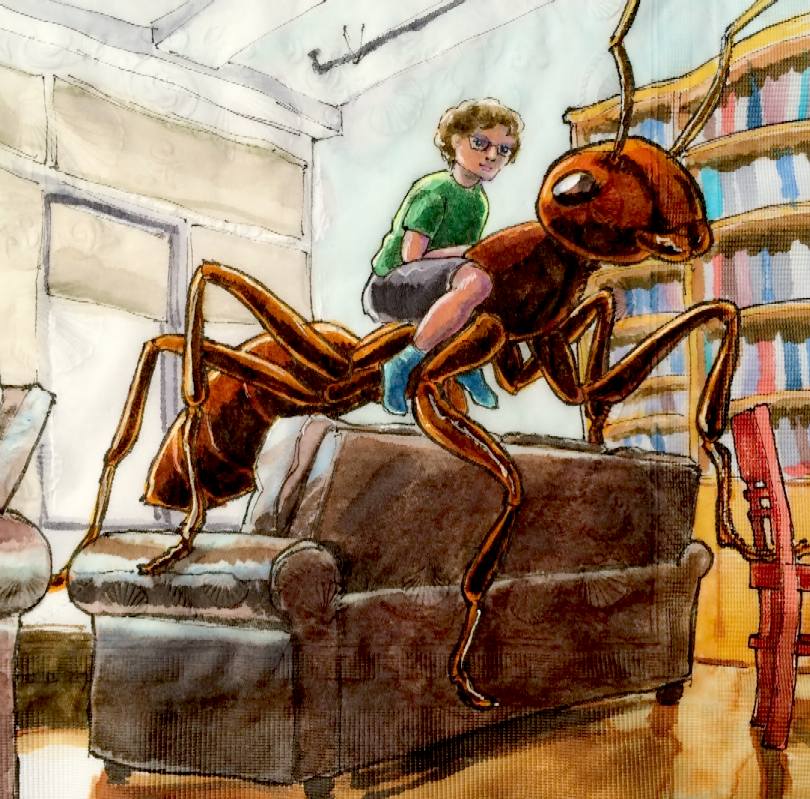
JIMMY
WATSON
-
His mother, Marion, teases her son about his dreams to build a large robot ant with a
drawing of her son riding on the ant's back. Then it comes true.
Covering an area in Finland, Sweden, Norway and even parts of Russia, Lapland is in the Arctic region including the icy North Pole.
As legend goes, the exact region is called Korvatunturi, in Rovaniemi – which is in the Finnish part of Lapland and is dubbed by Finland as ‘the official home of
Santa Claus’ (online).
It’s long been imagined Santa and Mrs Claus share a home here, and that his elves make all of the
Christmas toys in the area, in Santa's Workshop.
Real or imagined, millions of children wish for presents or other things to come true, at Christmas, the birthday of Jesus Christ. Who is said to have been born in a manger, under a starry sky, to the Virgin Mary.
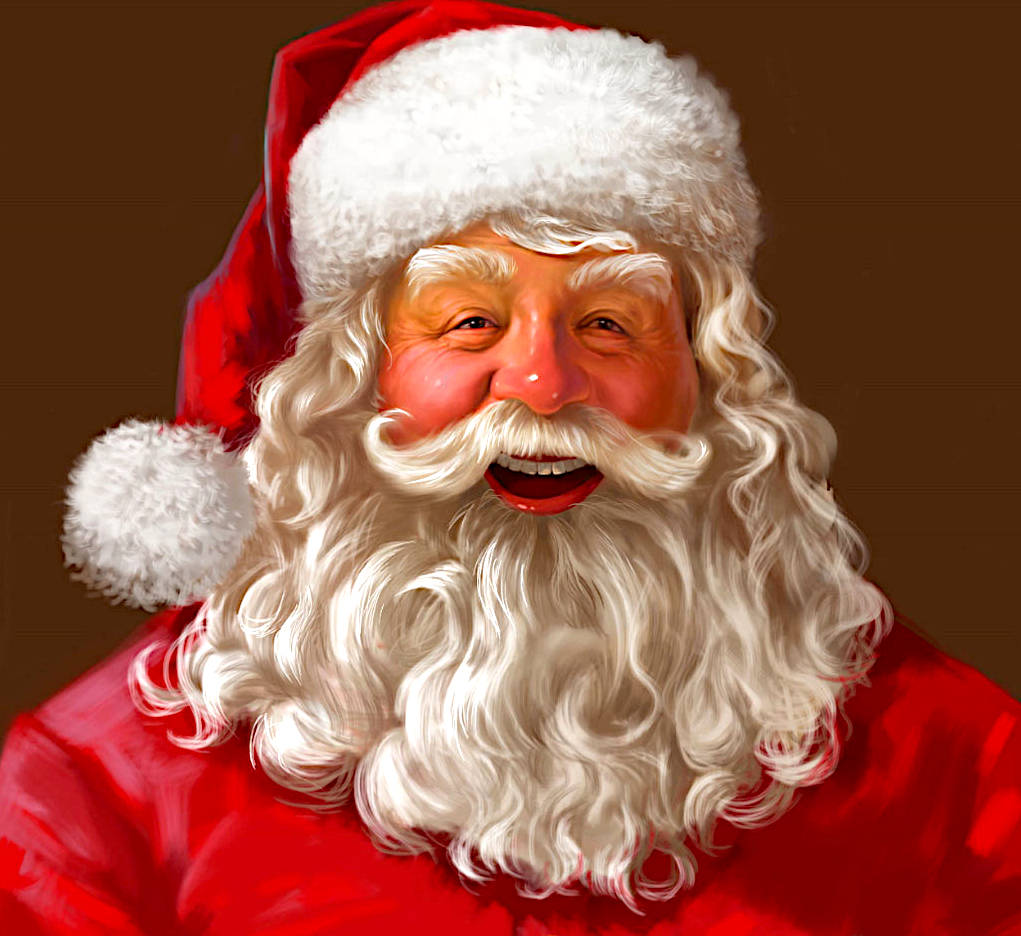
SANTA CLAUS
Santa Claus, also known as Father
Christmas, Saint Nicholas, or simply Santa. The jolly, bearded figure is legendary, originating in Western Christian culture. Dressed in red, Santa is said to bring gifts during the late evening and overnight hours on Christmas Eve to "nice" children, and either coal or nothing to "naughty" children.
Santa accomplishes all of this with the aid of Christmas elves, who make the toys in his North Pole workshop, and then deliver all the presents with the aid of flying reindeer who pull his sleigh through the air.
The modern figure of Santa is based on folklore traditions surrounding Saint Nicholas, the English figure of Father Christmas, and the Dutch figure of Sinterklaas.
Santa is generally depicted as a portly, jolly, white-bearded man, often with spectacles, wearing a red coat with white fur collar and cuffs, white-fur-cuffed red trousers, red hat with white fur, and black leather belt and boots, carrying a bag full of gifts for children. He is commonly portrayed as laughing in a way that sounds like "ho ho ho". This image became popular in the United States and Canada in the 19th century due to the significant influence of the 1823 poem "A Visit from St. Nicholas". Caricaturist and political cartoonist Thomas Nast also played a role in the creation of Santa's image. This image has been maintained and reinforced through song, radio, television, children's books, family Christmas traditions, films, and advertising.
The fact that so many people celebrate the event, makes it real. If nobody celebrated Christmas Day, or gave presents to children, it would cease to be real.
SAINT NICHOLAS
Saint Nicholas was a 4th-century Greek Christian bishop of Myra (now Demre) in the region of Lycia in the Roman Empire, today in Turkey. Nicholas was known for his generous gifts to the poor, in particular presenting the three impoverished daughters of a pious Christian with dowries so that they would not have to work the streets. He was very religious from an early age and devoted his life entirely to Christianity. In continental Europe (more precisely the Netherlands, Belgium, Austria, the Czech Republic and Germany), he is usually portrayed as a bearded bishop in canonical robes.
In 1087, while the Greek Christian inhabitants of Myra were subjugated by the newly arrived Muslim Seljuq dynasty, and soon after their Greek Orthodox church had been declared to be in schism by the Catholic church (1054 AD), a group of merchants from the Italian city of Bari removed the major bones of Nicholas's skeleton from his sarcophagus in the Greek church in Myra. Over the objection of the monks of Myra the sailors took the bones of St. Nicholas to Bari, where they are now enshrined in the Basilica di San Nicola. Sailors from Bari collected just half of Nicholas' skeleton, leaving all the minor fragments in the church sarcophagus. These were later taken by Venetian sailors during the First Crusade and placed in Venice, where a church to St. Nicholas, the patron of sailors, was built on the San Nicoḷ al Lido. St. Nicholas' vandalized sarcophagus can still be seen in the St. Nicholas Church in Myra. This tradition was confirmed in two important scientific investigations of the relics in Bari and Venice, which revealed that the relics in the two Italian cities belong to the same skeleton. Saint Nicholas was later claimed as a patron saint of many diverse groups, from archers, sailors, and children to pawnbrokers. He is also the patron saint of both Amsterdam and Moscow.
During the Middle Ages, often on the evening before his name day of 6 December, children were bestowed gifts in his honour. This date was earlier than the original day of gifts for the children, which moved in the course of the Reformation and its opposition to the veneration of saints in many countries on 24 and 25 December. The custom of gifting to children at Christmas was propagated by Martin Luther as an alternative to the previous very popular gift custom on St. Nicholas, to focus the interest of the children to Christ instead of the veneration of saints. Martin Luther first suggested the Christkind as the bringer of gifts. But Nicholas remained popular as gifts bearer for the people.
FATHER CHRISTMAS
Father Christmas dates back as far as 16th century in England during the reign of Henry VIII, when he was pictured as a large man in green or scarlet robes lined with fur. He typified the spirit of good cheer at Christmas, bringing peace, joy, good food and wine and revelry. As England no longer kept the feast day of Saint Nicholas on 6 December, the Father Christmas celebration was moved to 25 December to coincide with Christmas Day. The Victorian revival of Christmas included Father Christmas as the emblem of good cheer. His physical appearance was variable, with one image being John Leech's illustration of the "Ghost of Christmas Present" in Charles Dickens's festive story A Christmas Carol (1843), as a great genial man in a green coat lined with fur who takes Scrooge through the bustling streets of London on the current Christmas morning, sprinkling the essence of Christmas onto the happy populace.
Early representations of the gift-giver from Church history and folklore, especially St Nicholas, merged with the English character Father Christmas to create the mythical character known to the rest of the English-speaking world as "Santa Claus" (a phonetic derivation of "Sinterklaas" in Dutch).
In the English and later British colonies of North America, and later in the United States, British and Dutch versions of the gift-giver merged further. For example, in Washington Irving's History of New York (1809), Sinterklaas was Anglicized into "Santa Claus" (a name first used in the U.S. press in 1773) but lost his bishop's apparel, and was at first pictured as a thick-bellied Dutch sailor with a pipe in a green winter coat. Irving's book was a parody of the Dutch culture of New York, and much of this portrait is his joking invention. Irving's interpretation of Santa Claus was part of a broader movement to tone down the increasingly wild Christmas celebrations of the era, which included aggressive home invasions under the guise of wassailing, substantial premarital sex (leading to shotgun weddings in areas where the Puritans, waning in power and firmly opposed to Christmas, still held some influence) and public displays of sexual deviancy; the celebrations of the era were derided by both upper-class merchants and Christian purists.
The image of Santa Claus as a benevolent character became reinforced with its association with charity and philanthropy, particularly by organizations such as the Salvation Army. Volunteers dressed as Santa Claus typically became part of fundraising drives to aid needy families at Christmas time.
In 1937, Charles W. Howard, who played Santa Claus in department stores and parades, established the Charles W. Howard Santa School, the oldest continuously-run such school in the world.
In some images from the early 20th century, Santa was depicted as personally making his toys by hand in a small workshop like a craftsman. Eventually, the idea emerged that he had numerous elves responsible for making the toys, but the toys were still handmade by each individual elf working in the traditional manner.
The 1956 popular song by George Melachrino, "Mrs. Santa Claus", and the 1963 children's book How Mrs. Santa Claus Saved Christmas, by Phyllis McGinley, helped standardize and establish the character and role of Mrs. Claus in the US.
Seabury Quinn's 1948 novel Roads draws from historical legends to tell the story of Santa and the origins of Christmas. Other modern additions to the "story" of Santa include Rudolph the Red-Nosed Reindeer, the 9th and lead reindeer created in 1939 by Robert L. May, a Montgomery Ward copywriter, and immortalized in a 1949 song by Gene Autry.
Howsoever the legend developed, there is no doubt that Christmas celebrations would not be the same, if there was no Father Christmas, or Santa Claus.
The fact the celebrations coincide with the religious birth of Jesus Christ, does not seem to matter to many of a different faith. And why shouldn't other faiths enjoy what is after all, simply a family get together in winter, when it is only natural to want to enjoy a hearty feast. And give gifts to each other, to show affection.

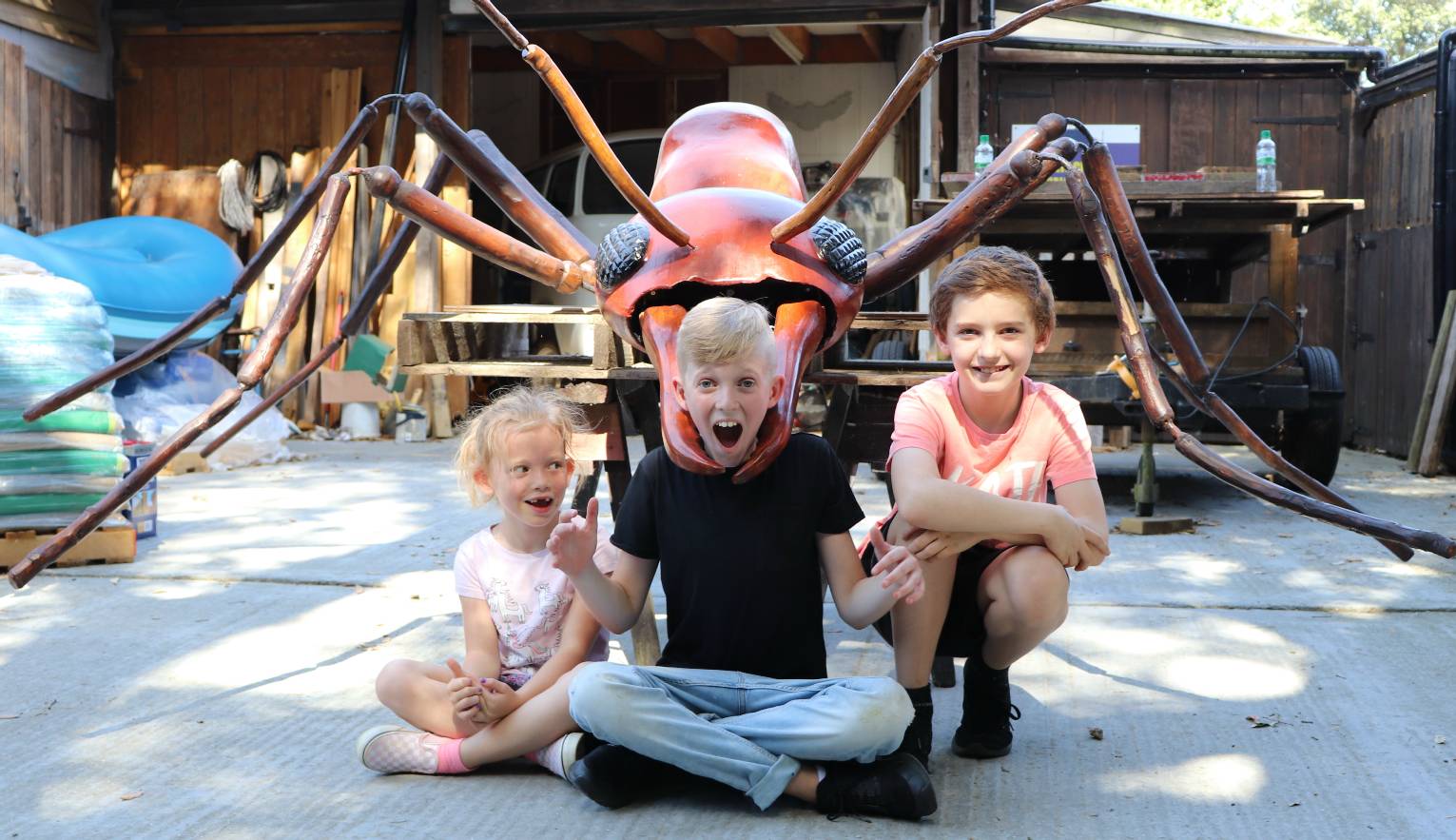
Some
of Jimmy Watson's friends, with the Magic Dinobot
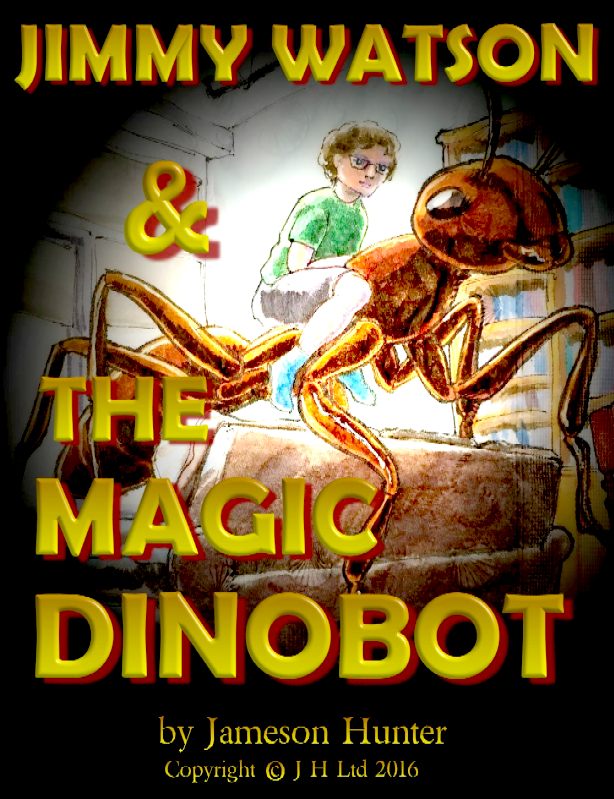
THE MAGIC DINOBOT
- From Jameson Hunter, an
original TV series idea, germinated in 2016. Jimmy dreams of building a giant
robot ant as a special project, then one day his dreams come true when the robot he
has built is transformed into a living, breathing, companion. NOTE:
This story is Copyright © Jameson Hunter
Ltd, March 30 2016. All rights
reserved. You will need permission from the author to reproduce the book
cover on the right or any part of the story published on this page.
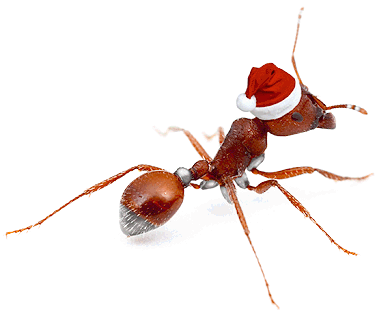
ANTICS
- ARMOUR
- ARTWORK
- BLACK BOX -
ELECTRONICS - ENERGY - FRAME -
HEAD - JAWS - KITS -
LEGS -
MECHANICS
MOTORS - MOVIE
- R/C DRONE -
SENTRY - SOFTWARE -
SOUND PROOFING - SPEED -
SUSPENSION - TAIL
- WEAPONS
- WARGAMING
|





